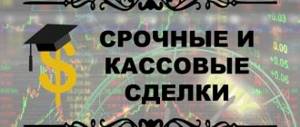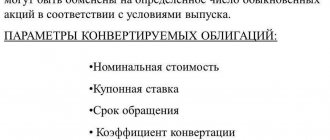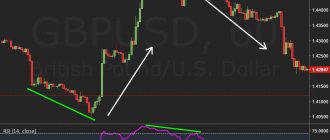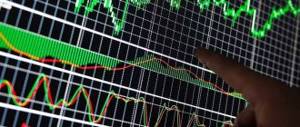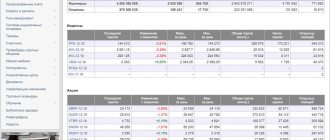The successful women traders that I decided to tell you about today can give a head start to many representatives of the stronger half of humanity. In fact, in the history of the market there are a huge number of examples of how women have successfully managed to head financial institutions and cope well with their responsibilities.
Today we can say with confidence that our beautiful ladies can not only drive a car, but also engage in trading.
In order not to be unfounded, I suggest you start looking at specific examples of successful women traders.
Sex, unisex and psychology
Women are treated differently in trading. There are three main approaches:
- Sexist.
Adherents of this trend believe that the intellectual and psychological characteristics of the female sex impede building a career as a trader. In general, kinder, küche, kirche. - Unisex.
Proponents of this approach (mostly supporters) declare complete equality between traders of both sexes. - Psychological.
But here everything is much more complicated. There is no complete unity between psychologists on this issue (after all, they, like lawyers, have three opinions on two professionals). But the overall picture is this: firstly, there are certain features in the functioning of the female and male brains that can influence the way of thinking; and secondly, hormones play a significant role in decision making.
When they hear the word “hormones,” sexists rub their hands with joy, but not everything is so simple.
Clara Furze
She became a kind of Valentina Tereshkova, only in trading - the first woman who began trading on the London stock exchange. Her trading career started in 1973, and already in 2001 she took the post of head of the exchange!
One can only envy Clara’s endurance and courage. When the exchange fell on hard times, many of its leaders chose to leave the market. But this fragile woman was not going to give up and was even able to improve the situation.
Ms Furze's annual income is £1.5 million, but money has not made her callous. She is a mother of three children and a caring wife who takes care of the warmth of the home. When asked by journalists about how she manages everything, Klara replies: “It’s all about self-organization and a strict schedule.”
Hormones and trading
If you read the article about dopamine stimulation, then you know what role the hormones dopamine and serotonin play in the life of a trader. And biochemists claim that hormones generally rule the world, and any emotion (theoretically) can be expressed in chemical formulas. When it comes to talking about the difference between a man and a woman, it is impossible to ignore the work of these substances. However, there is no point in turning the article into a lecture, especially since accurately establishing a direct connection between hormonal levels and the psyche is a matter for the future, but for now scientists have more assumptions than facts. But a couple of points, if not indisputable, then definitely require attention.
The first is the psychological state of a woman during premenstrual syndrome (PMS). The hormonal background during this period has such a powerful effect on lovely ladies that those around them sometimes look for a more reliable bunker. In trading, unfortunately, the storm of emotions and depressive moods characteristic of PMS provoke serious mistakes. If you are a female trader and have noticed that you experience emotional swings on days like these, you may be better off taking a short vacation once a month.
It would seem that nature has acted unfairly towards female traders. But here is the second fact: an excess of the male hormone - testosterone - can lead a trader to ruin. This is evidenced by the experiments of psychologists who studied the influence of pride (increased self-confidence) on decision-making in the financial sector. It turns out that testosterone, which provokes aggression and stimulates activity and competition, works not only as a motivator. It also reduces caution and increases stubbornness (which turns into obstinacy). Men with high testosterone levels in experiments showed a greater tendency to take unnecessary risks, leading to loss of money. So female traders, whose brains are not “pressured” by excess testosterone, find themselves in an advantageous position.
Famous Women Traders
Angeli Moledina (middle) is a long-time trader at Morgan Stanley, but has recently joined Moore Capital.
Leda Braga is the current owner of the investment company Systematica Investment, with more than $10 billion under management as of March 2021.
Nehal Chopra is a director at Ratan Capital Management. Over the past five years, he has consistently earned 20% per annum trading in the stock markets.
Katie Lien is probably the most famous female trader in the Forex market. After graduating from university in New York, Katie began working for JPMorgan Chase, specializing in trading currency pairs, options and futures. She later founded her own websites/companies including DailyFX and BKForex. With more than 13 years of experience in financial markets, Katie Lien has managed to write three books on trading.
Do you know other famous female traders? Leave their names in the comments.
The theory of "Einsteins and idiots"
In general, women are more moderate and cautious, psychologists say. Extremes are less common for the fair sex. There is a theory that the distribution of people on a scale from idiots to geniuses is gendered: among men there is a higher percentage of people with abnormally high and abnormally low IQs than among women. In other words, men have a higher chance of making a million on a brilliant deal, but the risk of losing their deposit due to their own idiocy is also higher.
Well, women mostly prefer to work using low-risk strategies, quietly earning moderate amounts.
Katherine Garrett-Cox
The female trader, nicknamed “Catherine the Great,” became a millionaire at the age of 35 and the head of the investment department in a large London fund.
In addition, she is a member of the supervisory commission of Deutsche Bank AG, and in 2012-2015. She was a member of the British Prime Minister's Business Group.
Garrett-Cox was awarded an OBE for services to the asset management industry. And by the way, she is a mother of four children!
Do you want to be among the ranks of successful female traders? Use a ready-made trading system for girls from Gerchik & Co! Get a vehicle right now
What will help a woman in trading?
Knowing your strengths helps you achieve success, knowing your weaknesses helps you reduce their influence. Each of us has pros and cons, determined by character, temperament, and psychological accentuations. There are also a number of psychological characteristics that are more typical of female traders.
- Increased emotionality is a minus. Trading loves coolness. Therefore, if you feel that you are subject to strong emotions, and even more so to their swings, work on it, turn on the personal Equilibrium mode while working.
- Increased caution is most often a plus, although it can also work as a minus. Women are less likely to take reckless risks, they are less susceptible to excitement (most gambling addicts are men), but excessive caution can cause fear of losses. You need to learn to calmly accept losses and be sure to work systematically.
- A high level of responsibility is a plus. Subconsciously, a woman is programmed to protect her offspring, so she is less likely to embark on adventures that threaten the loss of all savings. You often have to watch how the father of the family has his head in the clouds, trying to build a business, but not bringing home a penny, while the mother gets a third job. In trading, these same attitudes protect a woman from unnecessarily risky operations, especially if she has children.
- Difficulty leaving your comfort zone is a minus. The same attitudes prevent many women from changing their field of activity. Sometimes it seems easier for a female associate professor to get a job as a cleaner for the weekend to earn extra money than to apply her intelligence in trading. Therefore, if you are looking at trading, but are hesitant, perhaps you should act more boldly. For example, calculating how many hours of personal time you sell for next to nothing is a good motivation.
- Increased stress resistance and adaptability are a huge plus. Yes, women are psychologically stronger than men. They are more difficult to break (including due to the already mentioned natural attitudes towards protecting offspring). Psychologists are well aware of the phenomenon of moving, when a woman easily adapts to a new place, while a man experiences more stress. It has been noticed that during revolutions and crises, women also adapt better. Therefore, when they start trading, they perceive the new rules of the game more calmly.
Of course, women are not clones of each other; each has its own psychological dominants.
It is important to identify your strengths and weaknesses in order to confidently achieve success in trading - which, it seems, is no longer a purely male activity. subscribe to Telegram channel
TOP 10 women who have succeeded in investing and trading
Today, women traders make up less than 10% of the total number of all players in the market. However, they can achieve success in this matter no less than men. Because, as they say, professionalism has no gender. Below are the 10 most successful representatives of the “weaker” sex, who have reached incredible professional heights in stock trading and investment. At the same time, they are charming and successful not only in their professional but also in their personal lives!
Abigail Johnson, head of the largest investment fund
Abigail Johnson is the granddaughter of the founder of Fidelity (established in 1946) and chairman of the board of the mutual fund Fidelity Management and Research Co. Of course, her career was largely determined by her background (her father also previously headed this company) and education (MBA from Harvard). However, success in the investment field did not come to her as easily as many might think. This is the result of years of work, as Abigail spent 10 years as a customer service manager, analyst and portfolio manager at Fidelity before becoming the big boss. Today she manages a corporation with assets of more than $2.3 trillion, in which she owns a 24.5% stake. This woman bases her investment strategy on the basis of “active management” and a long-term perspective. Today, her corporation is the largest in the world in the field of mutual fund management, and Abigail, with her fortune of $13 billion, is one of the Top 50 richest people in the world and commands the respect of many due to her hard work and determination. She is also no stranger to experimentation. Abigail is interested in the development of the cryptocurrency market. Speaking at a conference dedicated to them, she said: “I’m here because I like all this ... everything that can happen in the future.” At the same time, she also took care of family happiness: Abigail is married and has two children.
Muriel Siebert, founder of a brokerage company on the NYSE
Muriel Siebert is so far the only woman to have founded a brokerage house in the United States. She opened her own brokerage firm, Muriel Siebert & Co. in 1967. Before that, she spent several years gaining experience in various brokerage companies, occupying the lowest positions, since she had neither a diploma nor connections at that time (she even had to lie about having a higher education in order to find a job). She was an analyst for some time. After becoming one of the top aviation and entertainment market analysts, Muriel decided to work for herself. Having overcome the entire difficult path of registering a company on the New York Stock Exchange (NYSE), she borrowed money from friends and took out a large loan from a bank to pay for the cost of a place on the most important exchange in the world - $450 thousand (taking into account inflation, this is now equivalent to about $3, 5 million!). The same bank, by the way, became one of Muriel’s first clients and forgave her the first month’s interest in exchange for providing brokerage services. She then had to overcome enormous pressure to make her company one of the most successful players in the brokerage business. She tried herself in politics, online trading and in the municipal loan market, reorganized the company and carried out an IPO. Siebert rightfully bears the title of “First Lady of the NYSE.”
Linda Bradford Raschke, professional trader
Linda Raschke is one of Wall Street's legendary virtuosos. She owes much of her passion for trading to her father, who also loved stock trading, although he was not successful at it. Linda was unable to get a job at a brokerage company right after college, so she began her path to trading as an analyst in a paper trading company. However, her work was located not far from the stock exchange, where the girl spent an hour every morning before her main job, trying to comprehend all the secrets of the art of trading. She was lucky - her determination was noticed and appreciated: one of the traders allocated her his capital in the amount of 25 thousand dollars and formed a partnership, thanks to which in 1981 she became a professional trader on the Pacific Coast Exchange, and then on the Philadelphia Exchange. She made her first serious money trading options. She then founded her own money management company, LBRGroup. Linda Raschke is the president of two financial firms: LBR Group Inc. (commodity trading advisor) and LBR Asset Management (commodity pool operator). Raschke is the author of many articles and books on stock trading, such as Wall Street Virtuosos.
4. Mary Callahan Ardows, head of JPMorgan's asset management subsidiary
This woman, with a fortune of $60 million, manages one of the largest companies in the world in terms of assets under management ($1.7 trillion) - JPMorgan Asset Management . In addition, she is also raising three children! How is this possible? Obviously only through enormous labor. Her colleagues claim that she manages to find time during the working day to, for example, pick up her children from school, but at the same time she always follows the “first in, last out” principle at work. With an amazing combination of work and personal life, Mary Erdoes today bears the title of one of the most influential women on Wall Street. She manages to demonstrate outstanding success in asset management: under her leadership, JPMorgan increases its client base and its assets grow.
Today, JPMorgan Asset Management is among the world's largest retirement planning firms, with more than half of the world's largest pension plans serviced by JPM. The division also offers more than 220 retail investment products, including exchange-traded funds (ETFs) and mutual funds.
Pollyanna Chu, CEO of Kingston Financial Group
Polianna Chu, along with her husband, runs Kingston Financial Group, which has a market capitalization of about $1.4 billion on the Hong Kong Stock Exchange. Her company is involved in underwriting, IPO financing, securities and futures trading. She and her husband named their company after their only son, Kingston. This woman was born in Hong Kong and studied in the USA. Together with her husband, she earned her first capital from real estate transactions in America, then, returning home, she founded a financial company. It is noteworthy that Polianna had no financial education (only a bachelor’s degree in management), and she learned the basics of financial markets on her own. Subsequently, her company also profitably invested in the gambling and hotel business in Macau. Among the qualities that helped her achieve success in the world of finance, she highlights the determination characteristic of men, on the one hand, and the caution characteristic of the fair sex, on the other. Apparently this unique combination, coupled with a unique mindset, is what made her the owner of a fortune of $4.9 billion. .
Cynthia Case, professional trader
Cynthia Case earned her capital and fame as a successful trader thanks to the trading system she created. Like many of the representatives of this craft, she did not have a specialized financial education. However, her chemical engineering degree apparently helped her in using a largely technical approach to market analysis rather than relying on fundamental analysis. She began gaining trading experience in 1983 in the trading department of Standard Oil of California as an institutional trader in energy futures. For a long time she worked on creating her own indicators. The most famous of them is PeakOscilltor, an impulse indicator. Cynthia often acts as a consultant, teaching not only technology, but also the psychology of trading. Her trading rule: do not rely on the opinions of others, develop your own strategy, be a loner, remain calm and focused. She also developed Dev-Stop technology for setting stop losses depending on volatility. Currently, Cynthia runs Kase and Company Inc., a company she created in 1992, where she is engaged in trust management, and also continues to trade in the stock market herself.
7. Lubna Olayn, head of the investment company Olayan Financing Company
Lubna Olayn is a well-known businesswoman in Saudi Arabia and runs her own investment company, which manages a portfolio of securities worth $4.4 billion, and Lubna’s net worth today is estimated at $2 billion Thanks to her own intelligence, she became one of the largest investors in the stock market not only in Saudi Arabia, but also in the world.
Lubna comes from a wealthy family; her father was the founder of the large business conglomerate Olayan Group, and it was he who brought her daughter into the world of finance. However, she would not have been able to reach such heights without her outstanding talent and abilities, and, possibly, the education received at Cornell University in the USA. It is noteworthy that Lubna did not build her entire career in the family business. For example, Lubna worked for some time as a financial analyst in the New York office of JP Morgan.
Deborah Farrington, Venture Capital Partner
Deborah Farrington, known as “Debbie” in the financial world, is the founder and president of StarVest Management and a partner in the venture fund StarVest Partners. Prior to joining StarVest, she served as President and CEO of private equity firm Victory Ventures, held senior leadership positions at Asian Oceanic Group, and was able to grow several privately held businesses. Overall, she has over 30 years of experience in the investment industry. For example, the Netsuite company under her leadership was valued on the stock exchange at $2.5 billion, although at the time of Farrington’s arrival the business had revenue of only $100 thousand. Deborah received her MBA from Harvard Business School. For some time she held senior positions at Merrill Lynch & Co. and The Chase Manhattan Bank. Several times Farrington was included in the top 100 US venture investors according to Forbes.
9. Catherine Garrett-Cox, head of one of England's largest foundations
Catherine Garrett-Cox, the former head of investment at one of the largest and oldest English City funds, Alliance Trust (she left a post in March 2021 after a confrontation with one of the largest investors over the appointment of independent directors), has already been recognized for her success in the investment business At the age of 33 she received the nickname “Katherine the Great”. She took over the 130-year-old investment fund with assets of £3 billion in 2008. Prior to this appointment, she was chief investment officer at Aberdeen Asset Management and chief information officer at Morley Fund Management. Catherine is also a member of the Board of Trustees of Deutsche Bank, Vice President of the Baring Foundation and founder of the Downtown London Lobby Group. Despite all her fame in the financial world, Katherine is the type of woman who manages to successfully combine responsible work with motherhood (just like, for example, Carol Galley from Merrill Lynch). As Katherine herself, who is raising two children, admitted, her personal life always came first.
Kirsten Green, investor and founder of venture capital fund
This charming and at the same time strong and smart woman received the title of Venture Capitalist of the Year last year. She is the founder and head of a young venture capital firm, Forerunner Ventures, which has managed to sign contracts with many successful startup projects. Today, she manages a fund with assets of $242 million.
Who are traders and what do they do?
The concept of “trader” comes from the English “trader”, which means “trader”.
This is a market participant who works with various assets: currencies, stocks, precious metals, futures, options, etc. His goal is to purchase a financial instrument at a low price and sell it at a high price. The result of such speculation will be his earnings. Who does the Russian trader work for? He can be a professional employee of a financial company and manage someone else’s capital, or act in his own interests and with personal money - the so-called private trader.
At the same time, it is important to understand that he does not trade at random: all transactions are accompanied by an analysis of the market situation plus the actual strategy developed.
For example, when buying shares, a trader will first of all look at the fundamental indicators of the company, the dynamics of its net profit, or rely on the technical characteristics of the charts. Based on the data received, he makes a forecast and, in accordance with it, makes short-term transactions.
How much do traders earn in Russia?
The earnings of Russian traders cannot be measured in rubles or dollars. It would be correct to talk about profitability as a percentage. Conventionally, all investors are divided into three groups: beginners, amateurs and professionals.
As for the first group, due to their inexperience and often low financial literacy, their income, as a rule, is negative. And only after a year of active work, when Russian traders become amateurs, profits begin to reach 2–5% per month. And with an increase in the risk level, it can increase to 9–40%. However, in this case, any mistake will be fatal.
Professional Russian traders, with low risks, manage to reach a level of 20–30% per annum.
By the way, Russians manage to make the most profitable transactions on the Forex currency market. The most losses are recorded on this same site.
Linda Raschke
Raschke began her career in 1981. Today she runs the LBR Group company, which she founded.
Raschke has published several books about the Forex market, of which the most popular is “Exchange Secrets.”
In her trading, Linda uses false breakouts and patterns, but does not like to use indicators. She recommends that novice traders not be afraid of mistakes and always analyze their transactions.
Cynthia Case
The head of the management company where Cynthia worked transferred her to the stock trading department in 1983, and from there her path to success began.
Case carefully observed the market year after year and developed not only her strategy, but also several effective technical indicators. The most famous of them is Peak Oscillator.
Journalists often ask Case if it is difficult to trade on the stock exchange, to which she honestly answers that yes, it is not easy. And for beginners interested in how to become a successful trader, she advises not to focus only on success, because Cynthia knows from her own experience that the path to the stars lies through thorns.
